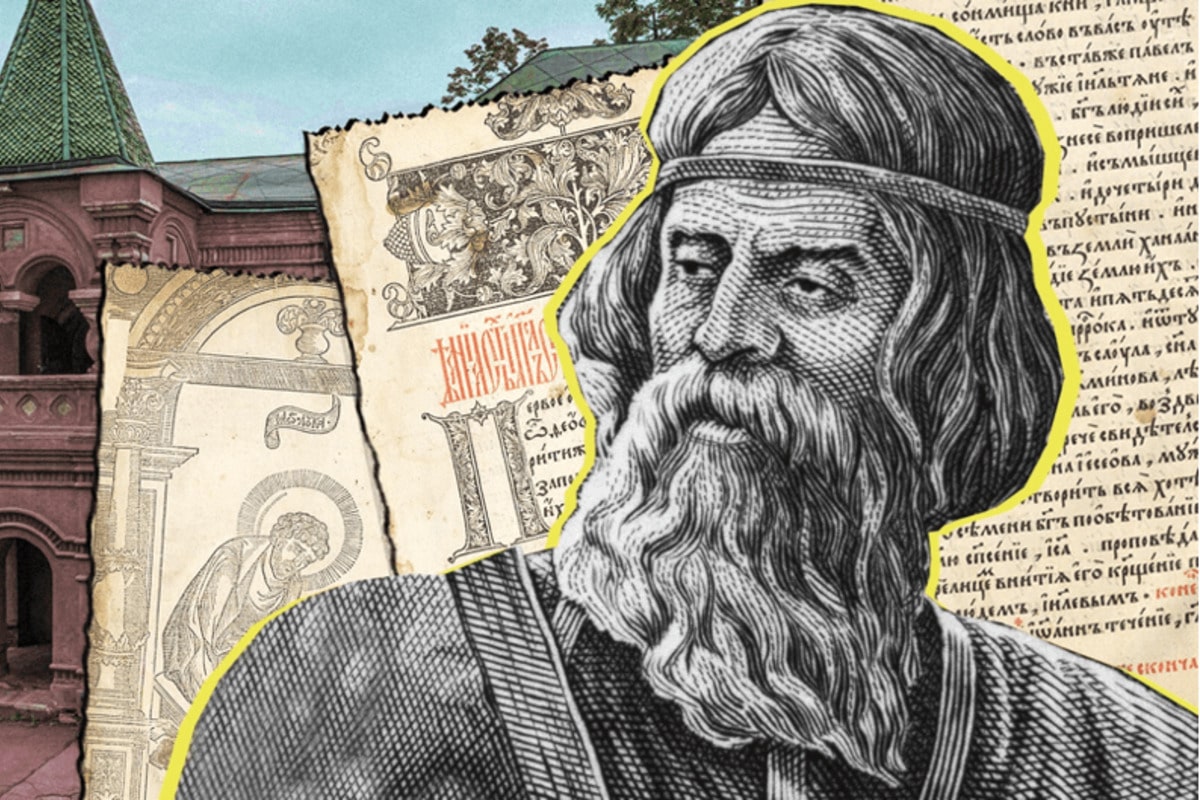Ivan Fedorov is remembered as a pioneer of printing in the East Slavic world, a dedicated educator, and a technological innovator. His work played a crucial role in the spread of literacy, education, and culture across Ukraine, Belarus, and Russia. Despite opposition and hardship, he remained committed to his mission of spreading knowledge through printed books. Fedorov’s life is a testament to the transformative power of education and the written word. Here are fascinating facts about Ivan Fedorov that you may not have known before.
- In 1564, Ivan Fedorov printed the first book in the East Slavic lands. The book, titled “The Apostle,” was published in Moscow and was noted for its high-quality typography and artistic design.
- Together with his colleague Pyotr Mstislavets, Fedorov improved printing technology and introduced innovative techniques. Their collaboration laid the groundwork for early printing across Eastern Europe.
- Due to resistance from scribes and members of the clergy, Fedorov was forced to flee Moscow. Printed books were seen as a threat to traditional manuscript copying, which provoked hostility in religious circles.
- After leaving Moscow, he continued his work in the Grand Duchy of Lithuania, particularly in Vilnius. There he published religious and educational texts for the broader Slavic population.
- In 1574, Fedorov published the first printed book on the territory of modern Ukraine. The “Lviv Apostle” became a significant milestone in the history of Ukrainian printing.
- That same year, he also printed the first Ukrainian primer. This “Bukvar” was intended to teach children and adults how to read and write and is considered the first printed Ukrainian textbook.
- Fedorov designed and built his own printing presses. He cast typefaces, engraved woodblocks, and managed every technical aspect of the printing process.
- In Ostroh, with the support of Prince Konstanty Ostrogski, he printed the famous Ostroh Bible in 1581. This was the first complete printed edition of the Bible in Church Slavonic.
- The Ostroh Bible became a masterpiece of Slavic printing and had a profound influence on education and culture. It was used in schools and churches for many decades.
- Fedorov was not just a printer but also a committed educator. His books helped spread literacy, spirituality, and cultural identity among the people.
- Ivan Fedorov died in Lviv in 1583 and was buried there. His grave has been preserved and is considered a historical and cultural landmark.
- The inscription on his tomb honors him as a “drukar” (printer), a title that reflects his life’s mission. It is a rare example of public respect for a craftsman of his time.
- There is ongoing debate about his ethnic origin. Some historians believe he may have had Ukrainian or Belarusian roots, which highlights the cross-cultural impact of his work.
- Many streets, schools, and libraries in Ukraine, Russia, Belarus, and other countries bear his name. His legacy is recognized both locally and internationally.
- Fedorov’s forewords and afterwords in his books offer valuable insight into his worldview and the difficulties he faced. These writings show his deep belief in the importance of education and progress.
- In 1977, UNESCO marked the 400th anniversary of the Lviv Apostle. This global recognition celebrated Fedorov’s contribution to world cultural heritage.
- Monuments to Fedorov can be found in Kyiv and Lviv. These serve as symbols of enlightenment and the advancement of knowledge.
- His work significantly influenced the spread of humanist ideas in Eastern Europe. Through his books, Slavic peoples found cultural unity in language, faith, and education.
- Fedorov printed not only religious texts but also practical educational materials. His commitment to printing textbooks supported the development of early schooling systems.
- The printing movement that Fedorov began marked the beginning of a new era in Eastern European cultural history. His example inspired generations of printers, teachers, and scholars.
These interesting facts about Ivan Fedorov reveal a man of vision, resilience, and innovation. His efforts laid the foundation for a literary and educational revolution in Eastern Europe. He left behind not only books but also a lasting cultural legacy. You may not have known it, but thanks to pioneers like him, access to knowledge became possible for millions across generations.





